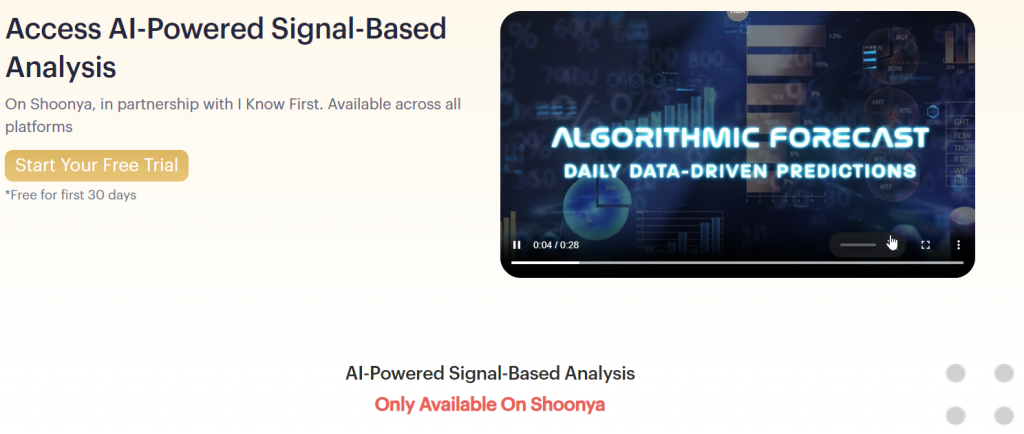20 Free Ideas For Picking Ai Investment Platforms
20 Free Ideas For Picking Ai Investment Platforms
Blog Article
Top 10 Tips To Diversify Sources Of Ai Data Stock Trading From Penny To copyright
Diversifying data is essential for designing AI stock trading strategies which can be applied to the copyright market, penny stocks and other financial instruments. Here are 10 top tips for integrating data sources and diversifying them for AI trading.
1. Use multiple financial market feeds
Tip : Collect information from multiple sources such as stock exchanges. copyright exchanges. and OTC platforms.
Penny Stocks are traded through Nasdaq or OTC Markets.
copyright: copyright, copyright, copyright, etc.
The reason: Using just one feed could result in incorrect or biased information.
2. Social Media Sentiment Data
Tip: Use platforms like Twitter, Reddit and StockTwits to determine the sentiment.
Watch niche forums such as r/pennystocks or StockTwits boards.
copyright-specific sentiment tools such as LunarCrush, Twitter hashtags and Telegram groups are also useful.
Why: Social media can indicate fear or excitement, especially in speculative assets.
3. Utilize macroeconomic and economic data
Include information on interest rates, GDP, employment, and inflation metrics.
The reason: The larger economic trends that impact the market's behavior provide a context for price movements.
4. Use on-chain data to support Cryptocurrencies
Tip: Collect blockchain data, such as:
The wallet activity.
Transaction volumes.
Exchange flows and outflows.
Why? On-chain metrics can provide unique insights into copyright market activity.
5. Include other data sources
Tip: Integrate unconventional types of data, such as
Weather patterns (for agricultural sectors).
Satellite imagery is utilized to aid in energy or logistical purposes.
Web traffic analytics (for consumer sentiment).
The reason why alternative data could be used to create non-traditional insights in the alpha generation.
6. Monitor News Feeds to View Event Information
Utilize natural processing of languages (NLP) to scan:
News headlines
Press Releases
Announcements of a regulatory nature
News could be a risky factor for cryptos and penny stocks.
7. Track Technical Indicators Across Markets
TIP: Use several indicators to diversify your technical data inputs.
Moving Averages
RSI is the index of relative strength.
MACD (Moving Average Convergence Divergence).
The reason: Mixing indicators increases the accuracy of prediction and helps avoid relying too heavily on one signal.
8. Include Historical and Real-Time Data
Tip Combine historical data with real-time information for trading.
What is the reason? Historical data proves the strategies while real-time data ensures they are adaptable to changing market conditions.
9. Monitor Regulatory Data
Inform yourself of any changes in the law, tax regulations, or policies.
For penny stocks: keep an eye on SEC updates and filings.
For copyright: Follow the government's regulations, adopting or removing copyright bans.
Why: Market dynamics can be affected by changes to the regulatory framework in a dramatic and immediate manner.
10. AI is an effective instrument for normalizing and cleaning data
AI Tools can be utilized to preprocess raw data.
Remove duplicates.
Fill in the gaps of missing data.
Standardize formats among multiple sources.
The reason: Normalized and clean data allows your AI model to work at its best without distortions.
Benefit from cloud-based data integration software
Tips: To combine data effectively, you should use cloud-based platforms like AWS Data Exchange Snowflake or Google BigQuery.
Cloud-based solutions are able to handle massive amounts of data from many sources, making it simple to analyze and integrate diverse datasets.
By diversifying your data you will increase the strength and adaptability in your AI trading strategies, no matter if they are for penny stock copyright, bitcoin or any other. See the most popular recommended reading for ai stock price prediction for website info including ai stock, stocks ai, trading bots for stocks, trading with ai, free ai tool for stock market india, ai for stock trading, ai trading platform, trading bots for stocks, best ai stocks, copyright ai bot and more. 
Top 10 Tips To Leveraging Ai Stock Pickers, Predictions And Investments
To enhance AI stockpickers and improve investment strategies, it's crucial to make the most of backtesting. Backtesting simulates the way AI-driven strategies been performing under the conditions of previous market cycles and offers insight into their effectiveness. Here are the 10 best tips to backtesting AI tools for stock-pickers.
1. Utilize High-Quality Historical Data
Tip: Ensure the tool used for backtesting is accurate and comprehensive historical data, including stock prices, trading volumes, dividends, earnings reports as well as macroeconomic indicators.
What's the reason? Quality data will ensure that backtest results reflect actual market conditions. Incomplete or incorrect data can cause false backtests, and affect the validity and reliability of your strategy.
2. Incorporate Realistic Trading Costs and Slippage
Tip: Simulate realistic trading costs such as commissions as well as slippage, transaction costs, and market impacts in the process of backtesting.
What's the problem? Not accounting for trading costs and slippage could result in overestimating the potential gains of your AI model. These aspects will ensure the results of your backtest closely reflect actual trading scenarios.
3. Tests in a variety of market situations
TIP Try out your AI stockpicker in multiple market conditions, including bull markets, periods of high volatility, financial crises or market corrections.
What's the reason? AI model performance may be different in different markets. Tests in different conditions will ensure that your strategy is durable and able to adapt to different market cycles.
4. Test with Walk-Forward
Tips: Walk-forward testing is testing a model using moving window of historical data. After that, you can test its performance with data that is not included in the test.
Why? Walk-forward testing allows you to evaluate the predictive ability of AI algorithms based on data that is not observed. This provides a much more accurate way to assess the real-world performance contrasted with static backtesting.
5. Ensure Proper Overfitting Prevention
Do not overfit the model by testing it using different times. Also, ensure that the model does not learn the source of noise or anomalies from historical data.
What is overfitting? It happens when the model's parameters are specific to the data of the past. This can make it less accurate in predicting market movements. A well-balanced, multi-market model should be generalizable.
6. Optimize Parameters During Backtesting
Backtesting tool can be used to optimize the most important parameter (e.g. moving averages. Stop-loss level or size) by altering and evaluating them over time.
The reason: By adjusting these parameters, you can improve the AI models performance. It is crucial to ensure that optimization doesn't lead to overfitting.
7. Drawdown Analysis and Risk Management Integration of Both
Tips: Use strategies for managing risk, such as stop-losses and risk-to-reward ratios and position sizing during testing to determine the strategy's resiliency against massive drawdowns.
Why? Effective risk management is key to long-term profitability. Through analyzing how your AI model handles risk, you are able to spot potential vulnerabilities and adjust the strategy to ensure better returns that are risk-adjusted.
8. Analyze Key Metrics Beyond Returns
To maximize your returns To maximize your returns, concentrate on the most important performance indicators, such as Sharpe ratio maxima loss, win/loss ratio, and volatility.
What are these metrics? They will give you a more precise picture of the returns of your AI's risk adjusted. If you solely focus on returns, you may overlook periods with high risk or volatility.
9. Simulate Different Asset Classes & Strategies
Tip : Backtest your AI model with different asset classes, such as ETFs, stocks or copyright, and various investment strategies, such as means-reversion investing or value investing, momentum investing and so on.
The reason: By looking at the AI model's flexibility, it is possible to evaluate its suitability for different types of investment, markets, and assets with high risk, such as cryptocurrencies.
10. Refresh your backtesting routinely and fine-tune the approach
TIP: Always refresh your backtesting framework with the latest market information, ensuring it evolves to keep up with the changing market conditions and brand new AI model features.
Why is that the market is constantly evolving and the same goes for your backtesting. Regular updates ensure that your backtest results are valid and the AI model continues to be effective even as new information or market shifts occur.
Bonus Monte Carlo Risk Assessment Simulations
Tip: Monte Carlo Simulations are an excellent way to simulate the many possibilities of outcomes. It is possible to run several simulations, each with distinct input scenario.
What is the reason: Monte Carlo Simulations can help you evaluate the likelihood of different results. This is particularly useful when dealing with volatile markets, such as cryptocurrencies.
You can use backtesting to enhance your AI stock-picker. An extensive backtesting process will guarantee that your AI-driven investments strategies are dependable, flexible and solid. This allows you to make educated decisions about unstable markets. Read the most popular ai for stock trading for website tips including ai for copyright trading, ai stock picker, best ai for stock trading, smart stocks ai, using ai to trade stocks, best ai copyright, ai for stock trading, ai trader, ai investing app, ai stock trading app and more.